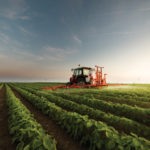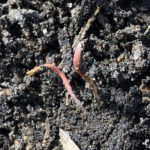
Tag Archives Herbicides

Precautions to take when applying dicamba

Breaking down the recirculating sprayer boom
Non-profit Sprayers 101 demonstrates the concept and benefits of a recirculating sprayer system

Protecting Canadian pulse crop market
Pulse Canada lists of pesticides growers need to talk to buyers about before applying or not use at all

Spring weeds rise up well ahead of seeding efforts
Weed forecasts have farmers expecting to reap the consequences of last year’s lack of field work
Ag-chemical cleanup dates, locations set
Drop off outdated or unwanted products for free

Adding some IQ to smart spraying
Weeds are in for some one-on-one attention with the latest spot-spraying tech coming down the pipe

VIDEO: Deciding when to spray to wipe out weeds
Know your economic threshold before firing up the sprayer

If farmers keep misusing glyphosate, they may lose it
The warnings from the ‘Keep it Clean’ campaign are taking on a more urgent tone

Dry year adds to spray considerations
Manitoba’s weather lately means weeds have toughened up and herbicides may have an uphill battle if weeds aren’t growing vigorously

Cool weather casts questions on weed burn off
Weeds haven’t exactly flourished in the cold this spring, but the province warns that they are germinating, and the cold itself lends challenges to spraying them out


